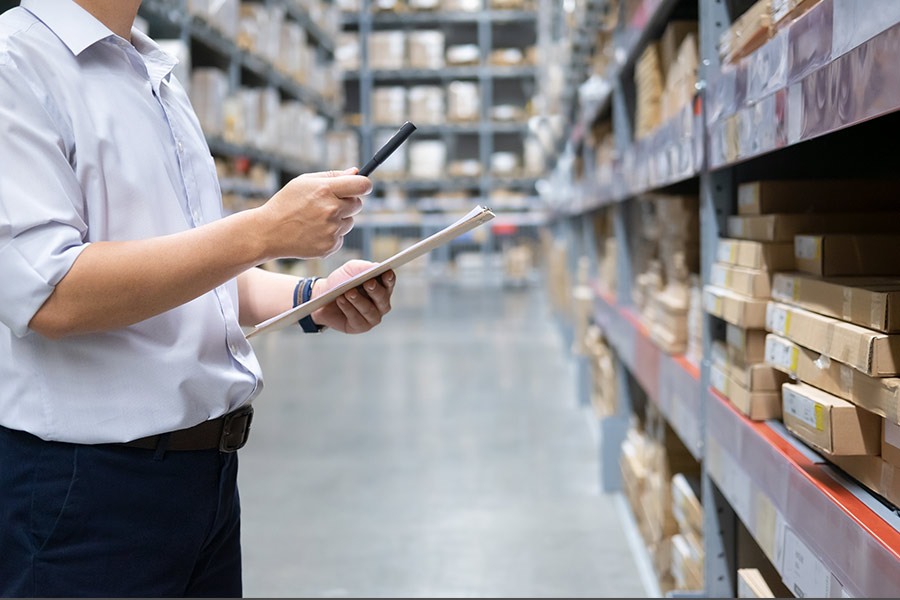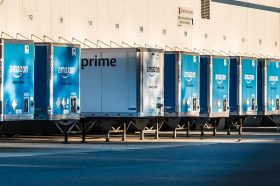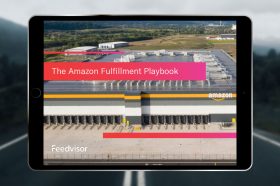Resources - Blog
Should You Convert Your Amazon FBA Product Listings to FBM?

Stay on top of the latest e-commerce and marketplace trends.
On March 17, 2020, Amazon announced that it would be suspending inbound inventory shipments for non-essential Fulfillment by Amazon (FBA) products in its U.S. and EU marketplaces through April 5, 2020. Then, 10 days later on March 27, Amazon informed its sellers that there is no longer a set date that regular FBA operations will be restored. The company also announced that it would broaden its list of products deemed as essential.
This decision was made to focus its warehouse capacity on the highest demand products that consumers need during the COVID-19 crisis, while also keeping Amazon’s fulfillment employees safe and able to follow the social distancing guidelines currently in place.
What Product Categories Are Now Considered Essential?
When Amazon made the first announcement on March 17, sellers who provide products that fall under the following categories would not be affected by these new FBA inventory shipment restrictions, as these types of products are categorized as essential:
- Baby Products
- Health and Household
- Grocery
- Beauty and Personal Care (including personal care appliances)
- Industrial and Scientific
- Pet Supplies
This announcement left many FBA sellers confused and scrambling, wondering what steps should be taken next. Understandably, fears of losing sales and wondering how this announcement would impact their business were top of mind within the Amazon seller community.
Based on Amazon’s March 27 announcement, how can sellers learn if their products are now eligible for FBA shipments?
When Amazon sent this new update to sellers on March 27, it did not list the specific types of products that are now permitted for FBA shipment creation. So, how can merchants know if this expanded list includes any of the FBA products they sell? The answer is to check your Seller Central account.
Sellers with active FBA product listings can visit the Restock Inventory page in their Seller Central account and will see a list of their products that are currently eligible for FBA shipments. If you do not see any products listed on this page, unfortunately, that means none of them are qualified yet. As Amazon continues to broaden its list of essential items, be sure to check this page regularly to see if any of your products become eligible.
What Can Sellers Do if Their Products Are Not Eligible for FBA Shipments?
If you are selling FBA products that are not considered high priority by Amazon, there is no need to panic. Amazon will continue to fulfill all of your customer orders with your inventory currently stored at FBA warehouses. Also, if you created a new shipment before March 17, your shipment will still be accepted.
If you are running low on stock, then keep your FBA listing active until every last item is sold. Then, you will need to reassess and change your fulfillment strategy.
If your Amazon FBA product listings are impacted, what are your options?
If you run out of FBA inventory during the COVID-19 crisis, while Amazon still has these restrictions in place, then you can consider the following:
- Change your FBA product listings to Seller Fulfilled Prime (SFP)
- Change your FBA product listings to Fulfilled by Merchant (FBM)
Which sellers can switch to SFP?
Amazon is not currently accepting new SFP registrations. However, if you have been accepted in the past and are not utilizing it, now is the time to do so as it will allow your listings to keep its highly valued Prime eligibility.
At the same time, you will have to handle order fulfillment and shipping yourself. Therefore, it is essential to make sure that you can meet the obligations that come along with SFP. Details on how to convert your listings from FBA to SFP and what requirements must be met can be found here.
Why Many FBA Sellers Are Switching to FBM
For the majority of sellers, converting their product listings from FBA to FBM status will be the quickest and easiest strategy to implement, as there is no registration, approval wait time, or trial period as there is with SFP. Most importantly, it will keep your product listings active so your sales will not be impacted too much. Also, you can easily convert these listings back to FBA after Amazon lifts its FBA shipping restrictions.
The downsides to switching FBA product listings to FBM are that your listings will not be Prime eligible, and you will need to fulfill and ship all customer orders yourself. If you cannot store inventory, fulfill, and ship on your own, then you can consider temporarily hiring a third-party logistics (3PL) company to handle all of these duties for you.
How do you convert FBA product listings to FBM?
Converting each product listing from FBA to FBM status is simple. Just follow the three steps below:
- Click on the “Inventory” tab on the top of your Seller Central homepage and choose “Manage Inventory” or “Manage FBA Inventory.”
- When in your Manage Inventory/Manage FBA Inventory dashboard, identify each product you would like to convert to FBM. For each one, click the down-facing arrow button — to the right of the “Edit” button — to reveal a dropdown menu of options.
- Select “Change to Fulfilled by Merchant.” It will bring you to a new page, where you then will click “Convert” to confirm that you want to make this change.
After completing the steps above, your product listings will be automatically listed as FBM. Now, when a customer purchases your product, Amazon creates the shipping label for you, which you can print out to ship each order. Then, when it comes time to switch back to FBA, you can follow the same steps listed above, but for the third step, select “Change to Fulfilled by Amazon.”
Final Thoughts
While the world continues to navigate the challenges that COVID-19 presents, all businesses must adjust their strategies accordingly. Luckily, for Amazon sellers, it just requires a few small, temporary adjustments to your FBA product listings (if needed), and continued patience until Amazon reinstates its usual FBA shipment policies.
For more information on the coronavirus crisis and its impact on the Amazon marketplace, visit our COVID-19 resource center.
Learn what Feedvisor can do for your business.
When you partner with Feedvisor, you automatically receive access to our true, AI-driven technology and hands-on team of e-commerce experts. Contact one of our team members today to learn more about our end-to-end solution for brands and large sellers on Amazon, Walmart, and e-marketplaces.




![How to Maximize Sales Through Amazon FBA [Webinar Recap]](https://feedvisor.com/wp-content/uploads/2019/12/Maximize-sales-through-amazon-fba-2-280x186.jpg)